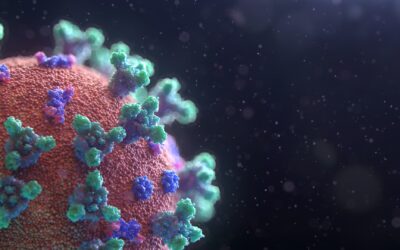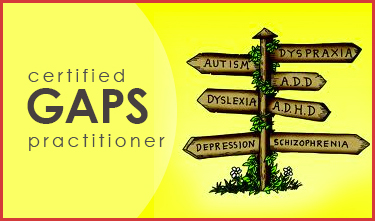There’s been a lot of talk in the medical community about the role of vitamin D in the development and prognosis of Covid-19 . The conclusion from the first three preprints [*] on this topic — two in Southeast Asia [1][2] and one in Belgium [3]— is that a vitamin D level of less than 25(OH)D might be associated with an increased risk of severe cases and higher mortality and that a level of 30 to 34 ng/mL 25(OH)D might be protective enough to prevent a severe case and to lower the risk of mortality.
So should we aim to have a level of vitamin D of 30 to 34 ng/mL 25(OH)? Sounds straightforward enough, but what does that mean in real life? What do we do with that information?
So I present to you a practical guide to vitamin D and how to maintain a healthy level — during the pandemic and beyond.
Ready? Here we go…

Let’s start at the beginning. What IS vitamin D, anyway?
I suppose Vitamin D was deemed a vitamin and not a hormone because we can only synthesize it by having appropriate sun exposure or from food as opposed to the way the rest of hormones are synthesized which is 100% “in house.” However, vitamin D is effectively a steroid hormone in the body. Hormones are messenger molecules and vitamin D is a messenger in a whole lot of processes.
The effects of vitamin D deficiency are not observed immediately but rather over a period of time based on how well the body is performing functions related to its presence. This is important, because unlike vitamin C for example, there doesn’t seem to be any immediate benefit to taking large doses of vitamin D at once and, in fact, there are potential risks to doing so. More on that when we talk about supplementation.
What does vitamin D do?
Vitamin D is part of the gene regulation and protein synthesis of hundreds of mechanisms.
Some trivia for you:
- Vitamin D balances calcium and phosphorous in the body, their absorption from food, and their distribution into bone and soft tissue.
- Vitamin D and vitamin A work in tandem to regulate the immune system and to prevent immune responses like allergies, asthma and psoriasis.
- Vitamin D, along with cholesterol, regulates the production of other steroid hormones, including testosterone, progesterone, estrogen, and aldosterone.
- Low vitamin D status increases the possibility of developing estrogen-mediated cancers, including breast, endometrial, colorectal, and ovarian cancer.
- Vitamin D is partly responsible for keeping the walls of the intestinal lining nice and tight. In fact, intestinal permeability (leaky gut) is strongly associated with vitamin D deficiency
And, as your favorite commercial announcer would say, there’s more. Much, much more!
How do we get vitamin D?
We already mentioned that we get it from sun exposure and from food. Let’s get a little more specific.
Vitamin D from sunlight
Sunlight converts vitamin D precursors in the skin into actual vitamin D, but the time it takes depends on the color of your skin, the amount of skin exposed to sunlight, and the angle at which the sunlight is hitting the skin.
The maximum potential for vitamin D production is reached just before the skin changes color — beyond that is just potential skin damage. Which means somewhere between 10 minutes for very fair skin all the way to about 2 hours for very dark skin. The more skin exposed, and the more perpendicularly — is that a word? — the sunlight rays hit the skin, the more vitamin D is produced.
So the ideal scenario for maximum vitamin D production would be to lie down naked and without sunscreen at noon during the summertime somewhere free of pollution at the equator and for a period of 10 minutes to 2 hours, depending on your skin color.
Wintertime in a city full of skyscrapers and little possibility to go outside means little to null chance to synthesize vitamin D.
As you can see, most of humanity cannot depend on sun exposure to produce the vitamin D we need!
Vitamin D from food
There are two kinds of vitamin D that we get from food: D2 or ergocalciferol from plants and D3 or cholecalciferol from animal sources. D2 must be converted into D3 in order to be utilized in the body and a lot of people, including those with low thyroid function and those with metabolic syndrome, pre-diabetes or diabetes, are poor converters, which is why it’s usually advised to consume animal sources of vitamin D and to supplement with the D3 form rather than the D2 form.
Vitamin D mixes with fat better than water — we call that “fat soluble.” Which means that:
- Vitamin D is found in the fat of food
- We should consume it in the context of fat — remember that if you are taking a supplement!
- Your body’s ability to assimilate it is going to be greatly impacted by the state of your bile, liver and gallbladder, which are all involved in fat metabolism.
The richest food sources of vitamin D are cod liver oil, egg yolks from chickens raised outdoors, butter and butterfat from pasture raised animals, lots of different fatty fish, fish roe, fatty cuts of meat from pasture raised animals and mushrooms grown under UV lights. From there we go quite a few notches down to vitamin D-fortified foods — cereals, baby foods, orange juice — but those contain the D2 form only.
Whereas fish liver is a source of vitamin D, the liver of land animals is not, because land animals store their vitamin D in the blood, not the liver.
So, most people have poor sun exposure and little access to food sources of vitamin D. Are you starting to understand why it’s relatively easy to become deficient in it?
Which brings us to…
Should you take a vitamin D supplement?
Since it’s likely that you are deficient — unless you’ve got the situation under control with sun exposure and food — the answer would be yes, BUT.
Ideally, you are monitoring your vitamin D level by getting tested every 3 to 6 months and adjusting your supplementation based on your symptoms.
A word about testing
Vitamin D is tested in blood. It is possible to test for the active form —1,25(OH)2D3 — but the standard test that your doctor orders is for the inactive form — 25(OH)D3. Even if your level of 25(OH)D3 is sufficient, that won’t give you a whole picture of how your body is converting and utilizing vitamin D. This is why paying close attention to your symptoms makes the difference.
Vitamin D testing should be included in your regular checkup blood work but it often is not. You need to ask your doctor for it! Subsequent tests during the year are likely to be an out-of-pocket expense. It is very easy to order your own vitamin D test kits online.
Back to supplementing
Vitamin D doesn’t work in a vacuum and its status affects and is affected directly by other nutrients and organ systems in the body.
For example:
- Magnesium is needed to convert 25(OH)D3 to 1,25(OH)2D3. Magnesium deficiency happens to be the most common nutrient deficiency across the board. It’s important that your level of magnesium is optimal before you start supplementing with vitamin D AND you might need to supplement with magnesium as long as you are supplementing with vitamin D. It often happens that a person presents symptoms of vitamin D “toxicity” — anxiety, muscle cramps, acid reflux — but it is the lack of sufficient magnesium that’s causing them.
- As we’ve already seen, vitamin D, calcium and phosphorus work in close relationship. So supplementing with vitamin D can affect calcium and phosphorus levels. This is particularly important if you’re taking a calcium supplement (which you probably SHOULDN’T do but alas, that’s a whole other conversation).
- Since vitamins A and K partner up with vitamin D for immune function purposes, taking additional vitamin D could deplete the other two if they’re not being monitored as well. This is so much the case that a lot of vitamin D supplements have vitamin K2 in the mix. Should you use one of those? I don’t know. That depends on your needs.
- Insufficient pancreatic enzyme action, insufficient bile function and intestinal permeability will affect the potential to absorb a vitamin D supplement.
- 25(OH)D3 is converted to 1,25(OH)2D3 primarily in the kidneys. Therefore the conversion will be impaired by kidney disfunction or disease.
For these and many other reasons, it takes focused attention to bring the level of vitamin D up to sufficient.
And that brings us to the Goldilocks moment…
What is the appropriate level of vitamin D?
As I said at the top, a level of 30 to 34 ng/mL of 25(OH)D3 seems to be protective enough to have a more favorable prognosis if you become sick with Covid-19, but is that a healthy level in general?
There is no medical consensus on this. Based on recent research, a level 40 to 50 ng/mL 25(OH)D3 seems to be the most beneficial for most people, but there is plenty of research that supports a higher level— 60 to 80 ng/mL 25(OH)D3 — for people who have an autoimmune disease or cancer.
And what is an appropriate daily dose of supplemental vitamin D — for YOU?
Oh, well… That, I do not know.
The average recommended daily dose of D3 supplements is between 1500 and 3000 IUs. The lower side of that spectrum is probably a safe place to start but unless you’re getting tested frequently and you get to understand how the influx of vitamin D affects your body, it’ll be difficult to determine the right dose for you.
One thing you shouldn’t do is take large doses of vitamin D, particularly when you’re just starting to supplement. Supplemental vitamin D still needs to go through conversion which means you can end up flushing your body with inactive vitamin D that takes over vitamin D receptors in the cells and diminishing your chances to utilize it appropriately. Slow and consistent is best when it comes to supplementing with vitamin D.
In conclusion:
Vitamin D is pretty friggin’ important and it takes a little work to determine what’s a good level for you, how you can best obtain it, and how well your body is using it.
When was the last time you got blood work done? Did you get tested for vitamin D? What’s your number? Maybe there’s a good action for you to take around this.
May our renewed focus on the immune system serve us during the pandemic and far beyond.
[*] The term “preprint” refers to a study waiting to be peer-reviewed. Because proper science takes time, pretty much all the research on this virus published so far is on preprint stage.
[2] Vitamin D Level of Mild and Severe Elderly Cases of COVID-19: A Preliminary Report
[3] Vitamin D deficiency as risk factor for severe COVID-19: a convergence of two pandemics

About Andrea
I am a functional medicine health coach and a therapeutic diets chef and my mission is to help you feel great in your physical body so that you can focus on living the life you want.
Since 2005 I've been dedicated to the study and practice of nutrition, wellness and functional medicine principles, which I translate into a customized practice for you. Think of me as a project manager. The project? YOUR freedom from chronic dis-ease.









0 Comments